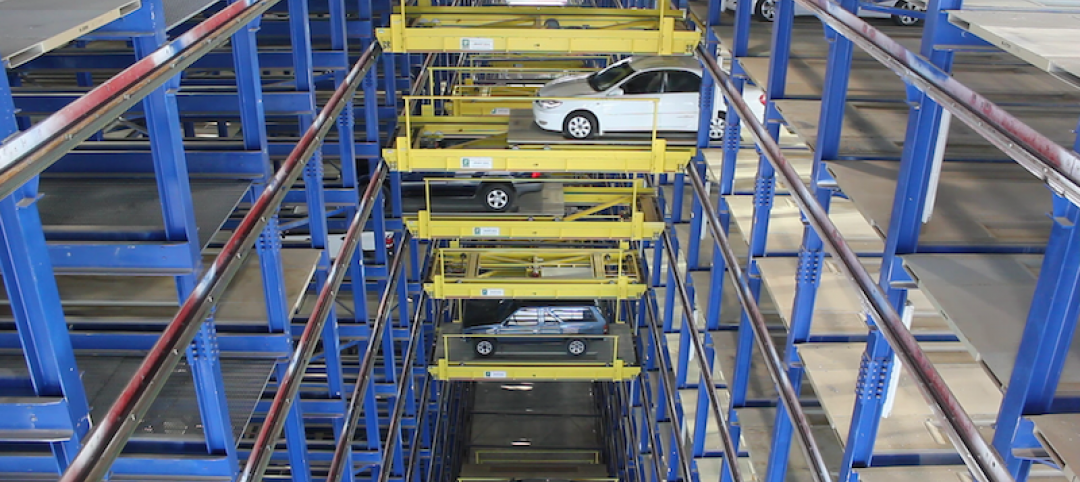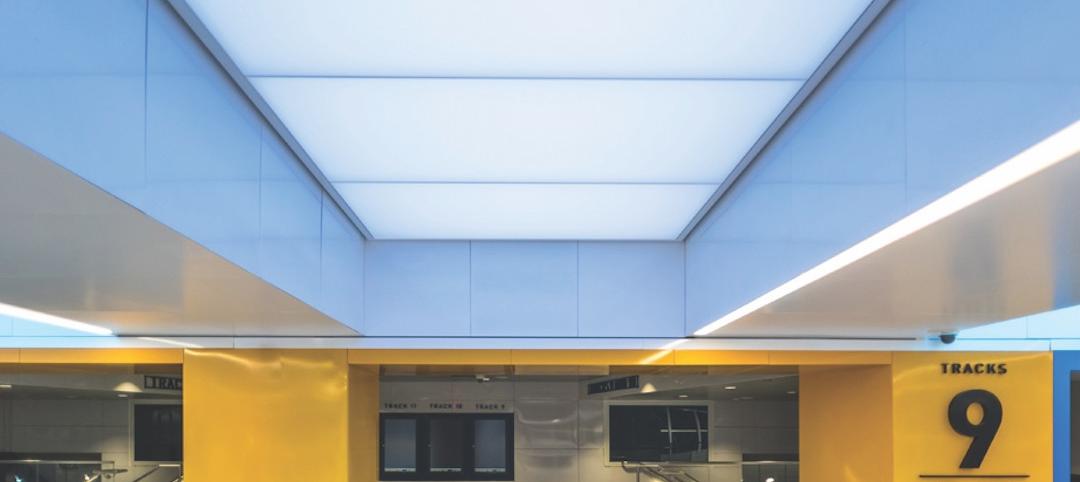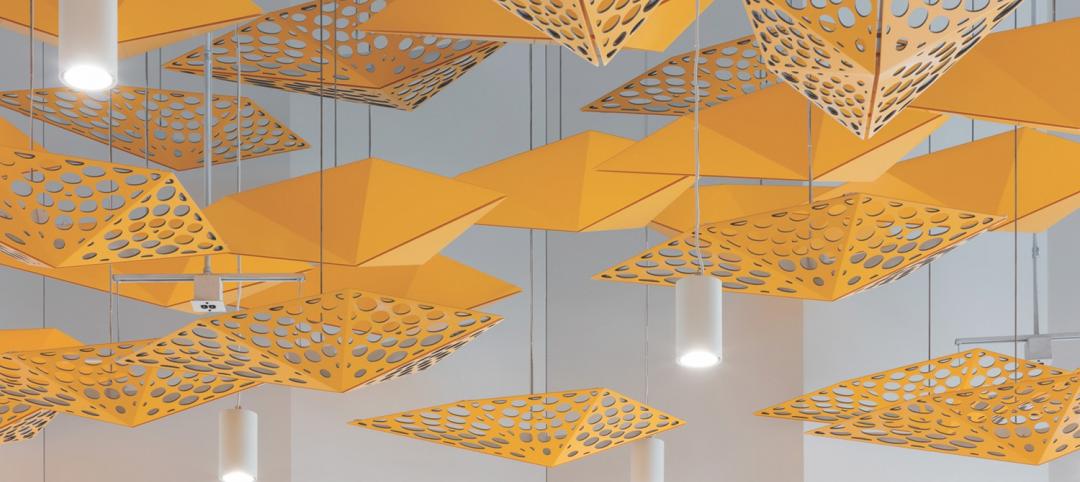 |
| Only 20 geothermal boreholes were drilled at the WestJet complex because a majority of the piping was embedded in the building’s structural piles. |
19. Hybrid Geothermal Technology
 |
20. Kinetic Road Plates Power Purchases
 |
| Graduate student Shawn Shields checks server performance while Dr. Yogendra Joshi looks on at Georgia Tech’s simulated data center. |
21. Cutting the Cooling Load of Data Centers by 15%
Researchers at the Georgia Institute of Technology, Atlanta, are using a 1,100-sf simulated data center to develop and evaluate new ways of controlling heat in commercial data centers, one of the fastest-growing building types in the country. The researchers, led by Professor Yogendra Joshi of the Woodruff School of Mechanical Engineering, have found ways to cut energy center cooling costs 15% by rearranging servers and space for optimal airflow patterns. Their simulated data center uses several different cooling systems, partitions to change room air volumes, sophisticated thermometers attached directly to a server's motherboard, and both real and simulated airflow sensors to measure the output of fans and other systems. The research is sponsored by the U.S. Office of Naval Research and the Consortium for Energy Efficient Thermal Management.
Related Stories
Smart Buildings | Jul 1, 2024
GSA to invest $80 million on smart building technologies at federal properties
The U.S. General Services Administration (GSA) will invest $80 million from the Inflation Reduction Act (IRA) into smart building technologies within 560 federal buildings. GSA intends to enhance operations through granular controls, expand available reporting with more advanced metering sources, and optimize the operator experience.
AEC Tech | Apr 30, 2024
Lack of organizational readiness is biggest hurdle to artificial intelligence adoption
Managers of companies in the industrial sector, including construction, have bought the hype of artificial intelligence (AI) as a transformative technology, but their organizations are not ready to realize its promise, according to research from IFS, a global cloud enterprise software company. An IFS survey of 1,700 senior decision-makers found that 84% of executives anticipate massive organizational benefits from AI.
Products and Materials | Mar 31, 2024
Top building products for March 2024
BD+C Editors break down March's top 15 building products, from multifamily-focused electronic locks to recyclable plastic panels.
75 Top Building Products | Dec 13, 2023
75 top building products for 2023
From a bladeless rooftop wind energy system, to a troffer light fixture with built-in continuous visible light disinfection, innovation is plentiful in Building Design+Construction's annual 75 Top Products report.
Products and Materials | Sep 29, 2023
Top building products for September 2023
BD+C Editors break down 15 of the top building products this month, from smart light switches to glass wall systems.
Office Buildings | May 15, 2023
Sixteen-story office tower will use 40% less energy than an average NYC office building
This month marks the completion of a new 16-story office tower that is being promoted as New York City’s most sustainable office structure. That boast is backed by an innovative HVAC system that features geothermal wells, dedicated outdoor air system (DOAS) units, radiant heating and cooling, and a sophisticated control system to ensure that the elements work optimally together.
AEC Tech | May 1, 2023
Utilizing computer vision, AI technology for visual jobsite tasks
Burns & McDonnell breaks down three ways computer vision can effectively assist workers on the job site, from project progress to safety measures.
Building Automation | Jul 19, 2020
A Florida company is helping developers optimize their buildings’ parking amenities
Robotic Parking Systems leads with the reliability record of facilities where its product has been installed.
75 Top Building Products | Dec 16, 2019
101 Top Products for 2019
Building Design+Construction readers and editors select their top building products for the past 12 months in the fourth-annual 101 Top Products report.
75 Top Building Products | Dec 16, 2019
Top Building Systems Products for 2019
FabricAir’s ceiling-hung fabric duct and Ellumi Lighting’s bacteria-killing lights are among the 13 new building systems products to make Building Design+Construction's 2019 101 Top Products report.
















